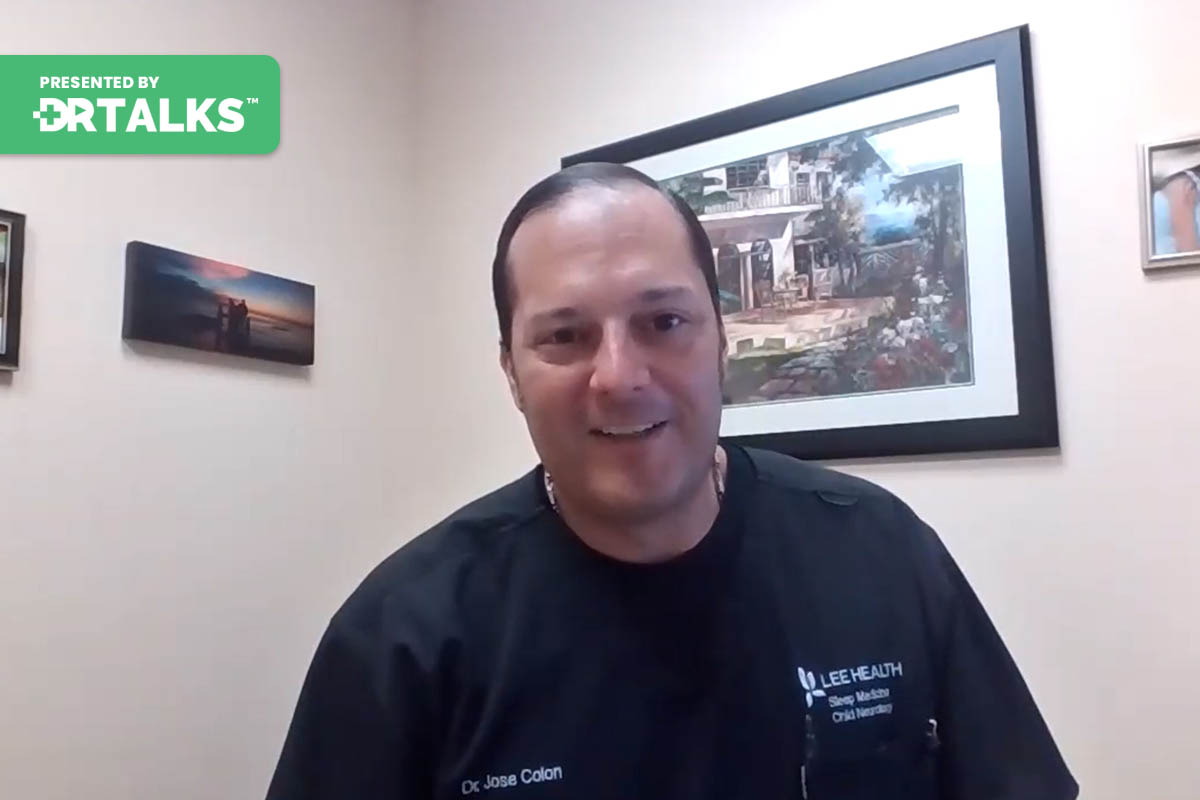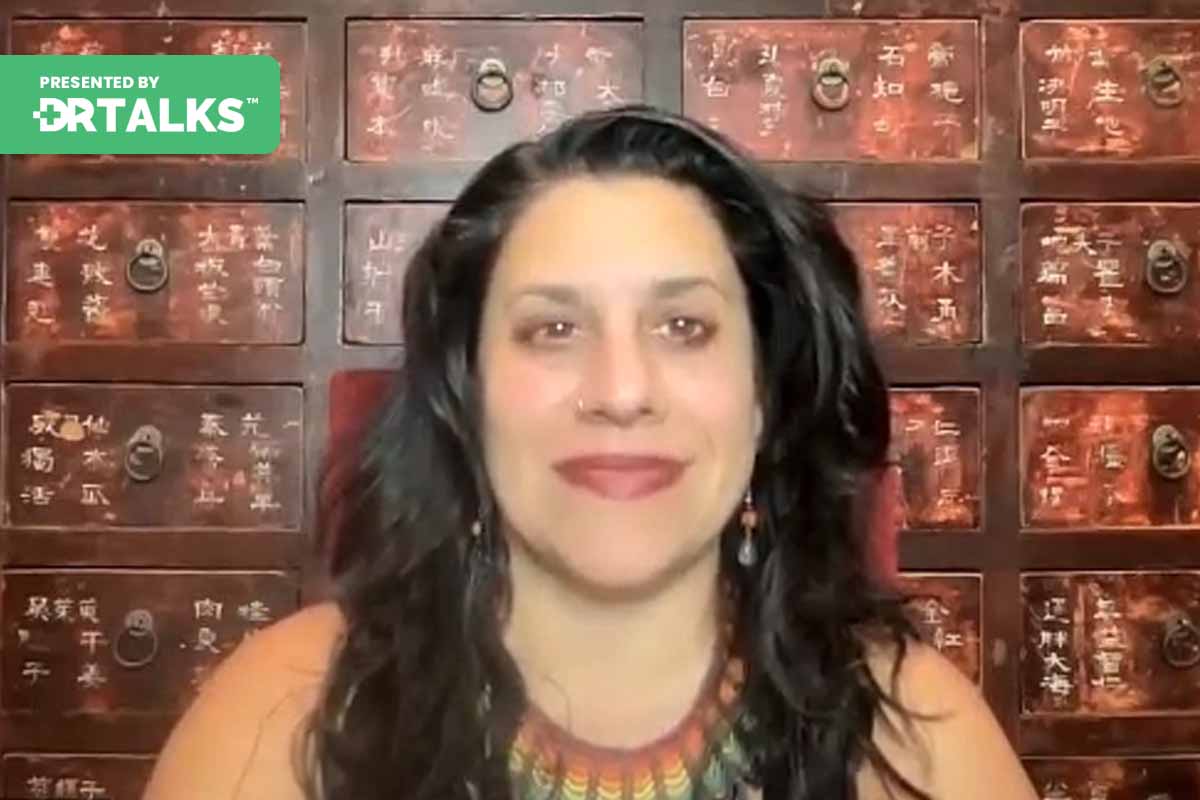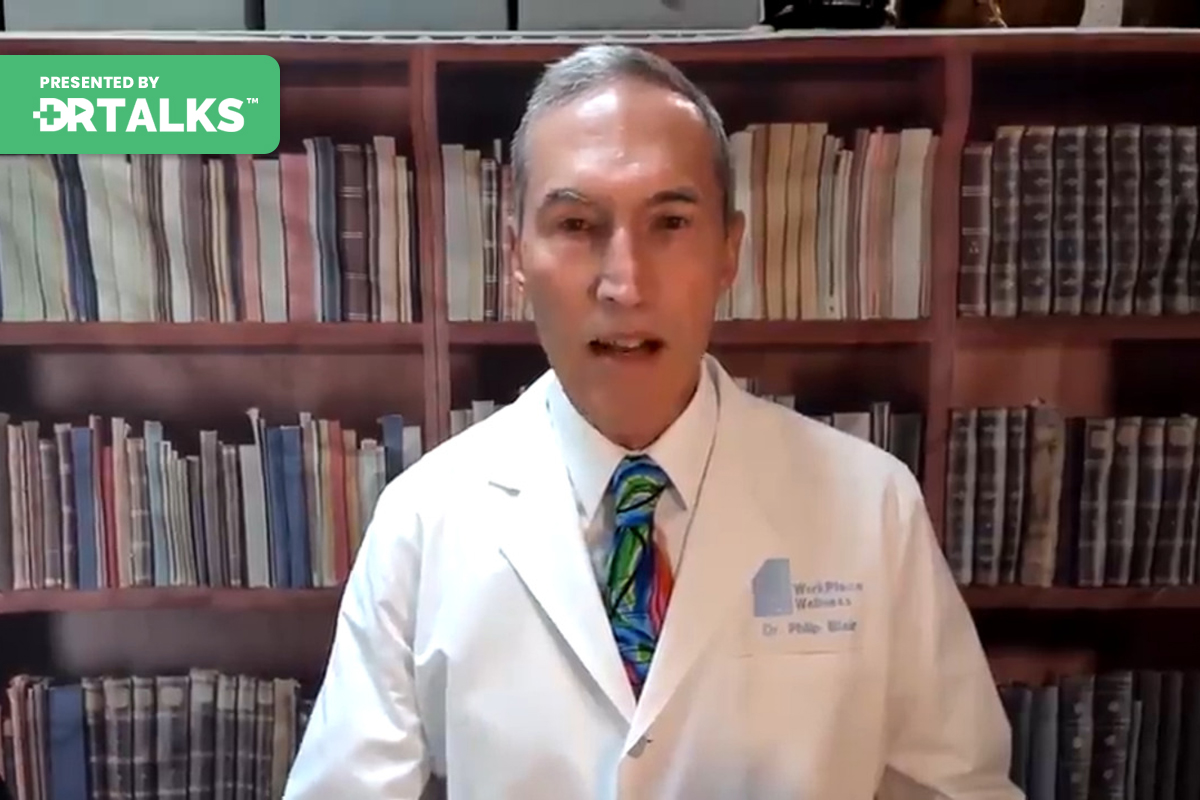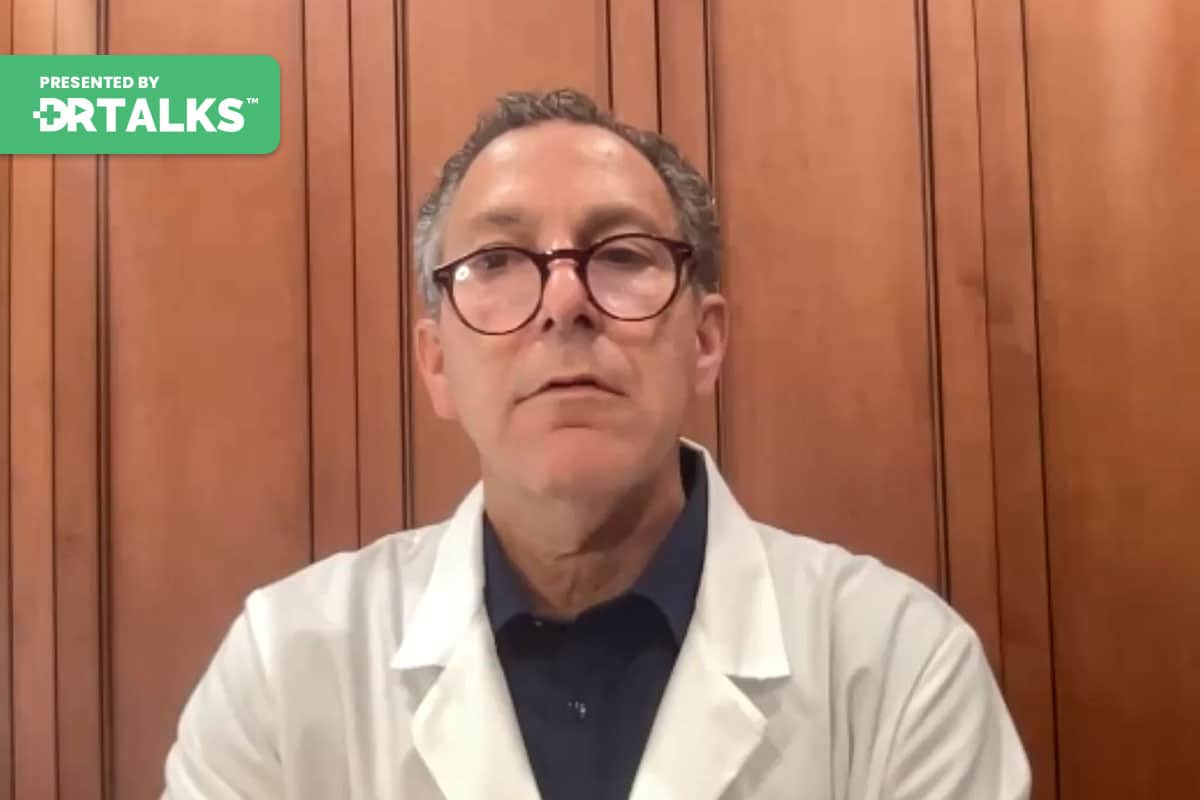Join the discussion below
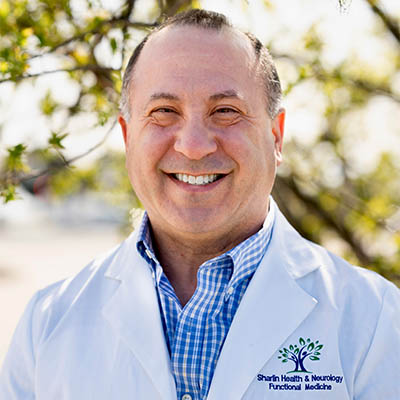
Kenneth Sharlin, MD, MPH, IFMCP
Kenneth Sharlin, MD, MPH, IFMCP, is a board-certified neurologist, consultant, functional medicine practitioner, Assistant Clinical Professor, researcher, author, and speaker. His medical degrees are from Emory University, The University of Virginia, and Vanderbilt University. His functional medicine certification is through The Institute for Functional Medicine. He is author of the... Read More
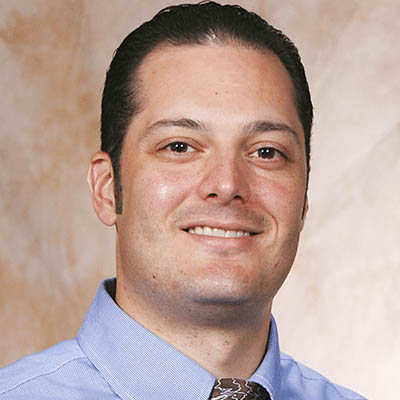
Dr. Colon is triple board-certified in sleep medicine, child neurology, and lifestyle medicine. He is a Fellow of the American Academy of Sleep Medicine and a founding member of the Society of Behavioral Sleep Medicine. He is an Institute for Functional Medicine Certified Practitioner. Dr. Colon is an award-winning author... Read More
- Understand the detrimental effects of chronic sleep deprivation on your body and mind
- Learn about the crucial stages of sleep and the significance each stage holds for your overall well-being
- Gather effective strategies to combat Parkinson’s disease-related sleep disturbances and the benefits of monitoring your sleep patterns
- This video is part of The Parkinson’s Solutions Summit
Related Topics
Alzheimers, Brain, Child Neurology, Chronic Sleep Deprivation, Deep Sleep, Eegs, Foundations Of Sleep, Functional Medicine, Grain Brain, Ifmcp, Insomnia, Institute For Functional Medicine, Lifestyle Medicine, Neurology, Optimal Sleep Amounts, Parkinsons Disease, Pediatric Neurology, Rapid Eye Movement, Rem Period, Rest, Sleep, Sleep Health, Sleep Medicine, Sleep Spindles, TriggersKenneth Sharlin, MD
This is Dr. Ken Sharlin. Welcome to the Parkinson’s Solutions Summit. I hope you’ve been enjoying this summit so far. We had a wonderful interview today with Dr. Jose Colon from the Central Coastal Florida Area near Fort Myers.
Jose Colon, MD
Yes.
Kenneth Sharlin, MD
He’s going to talk with us today about sleep medicine, sleep, and Parkinson’s disease. Dr. Colon and I have known each other for quite a long time now, with a mutual interest in functional medicine, neurology, and training at the same institution, Vanderbilt University. We have some common friends. Dr. Colon is going to tell you a little bit about himself. He has so many hats and is so multi-talented. I want to mention that one of his real passions as a pediatric neurologist is children and children’s sleep patterns. You may think that maybe this is an unusual segway into Parkinson’s disease. But in functional medicine, we talk a lot about triggers and mediators. How did we get here, and what’s keeping us on that trajectory? It’s so important to talk about the foundations of sleep, beginning in childhood. Hopefully, the viewers will all agree. But without further ado, Dr. Jose Colon, welcome to the Parkinson’s Solutions Summit. Thank you for being here.
Jose Colon, MD
No, thank you for having me. It’s funny; you talk about antecedents, triggers, and mediators, and I like Star Wars. Do you like Star Wars? Are you a Star Wars guy?
Kenneth Sharlin, MD
Well, I’m. But I am a Trekkie, I must say. It’s like dogs or cats. I like them both. But I’m a Trekkie at heart.
Jose Colon, MD
I got into the series Anakin Skywalker when he was going through Jedi training school. He had quite a bout of insomnia. I do believe that young Anakin would have had my children’s book. He would have never turned to the dark side.
Kenneth Sharlin, MD
There you go. That’s what it’s all about. How did you get interested in neurology and functional medicine, and then segway into sleep medicine? Did it all come together for you?
Jose Colon, MD
Ken, my life is a series of accidental opportunities, and there’s an old saying. Luck is when preparation meets opportunity. That’s what I’ve been working hard for, and opportunities have come up. I went to medical school to be a general pediatrician. That was my passion and my call. My dad was a pediatrician, and he didn’t tell me to do this, but I grew up watching him love what he did, and I enjoyed watching him do what he did. I got into medical school, and then I did my pediatrics rotation, and I couldn’t give parenting advice when I wasn’t a parent. I just couldn’t do it. I said, “No, this is not me.” I had to think of it as a specialty. I took my neurology rotation. Fourth-year medical school, we were required to take it, and I took it early to get it out of the way, and I fell in love with it, and my paradigm changed, and I was like, “Oh my God, now I’m going to do something else. I’ve been training for this, but I’m going to do something different.” I learned that if you were to do child neurology, you would do pediatrics training, then neurology, and then child neurology. I was like, “Man, that’s cool.” But we didn’t have a program at USF. I had this mentor in Tampa, Dr. Parrish Winesett, that people told me to talk to, and I did. We flew up to Nashville together, uninvited. We flew up together, and we toured. That was the first time that I met Dr. Pina-Garza. Well, and I remember just meeting everyone, and they were like, “Oh, hey, nice to meet you. We don’t have any spots available.” I was just there, just turning and checking it out. Then, at the very end of the day, I sat down with Dr. Fenichel, wrote the textbook and child neurology, and I could still hear him. I could still hear his voice.
Kenneth Sharlin, MD
Yes.
Jose Colon, MD
He told me that one of the fellows who was supposed to be for the upcoming year pulled out and decided that they wanted to do intensive care. I went up there uninvited, and I got offered a spot. That was the next step in my journey. I was going to be a pediatrician. I was going to be a child neurologist. I got to Vanderbilt, and over there, the Department of Sleep Medicine was through the Department of Neurology, and I just fell in love with it. The first time that I was reading EEGs and I saw sleep spindles, I was like, “Ooh, those are cool,” and I don’t have any tattoos, but if I did, they’d be like little sleep spindles and rapid eye movement problems. Then I was looking for a position as I was graduating in child neurology, and I was Googling positions while I was on call waiting for an admission. I saw Fort Myers. Okay, that’s near Tampa. I know where that is on the map. Let me check it out. I told my wife, at these opportunities, we wanted to go to Tampa, and I told my wife, I’m like, Listen, we could have this great opportunity in Fort Myers or we can have a good life in Tampa.
When I came down and visited Fort Myers, I saw the opportunity: “Hey, we can have a good job and a good life over here in Fort Myers.” I started a practice in child neurology, but I was also doing sleep medicine. I started writing books as well. One day I went to my happy place, which was Barnes, and I was going to write some. I saw some books, and out of the corner of my eye, I saw the brain. As a neurologist, if you see a brain that’s like a teenager in a bikini, “Whoa, your eyes go straight there.” I was like, “You have a brain. It said, Grain Brain.” Then I looked under, and I said, Dr. David Perlmutter. I go, “Hey, I know him as the guy I met.”
For a while, he would order an EEG on a kid, and I’d be like, “Hey, this is pretty abnormal. Do you need my help?” He’s like, “No, I’m good. I’m okay.” I didn’t know what he was doing. I just know that he was down there. Every time I talked to him, he was very cordial and very nice. I was like, “Oh, my paradigm just changed.” And then I reached out to him, and I was like, “Wow, I want to know about what you do.” And we had lunch. He told me that if I was interested in learning to go through the Institute for Functional Medicine and I did, I never looked back. Currently, I am practicing sleep medicine full-time. I still see some child neurology in the hospital. I am triple board certified in sleep medicine, child neurology, and lifestyle medicine as well. That’s another journey of accidental opportunities. Also, I’m an IFMCP.
Kenneth Sharlin, MD
That’s such a wonderful coincidence and convergence of things. Yes, it was David Perlmutter’s Grain Brain that was a huge turning point for me as well, in terms of what I was doing at that point in my life. and I was very involved with endurance sports, such as triathlon. I was already seeing nutrition and stress management; things like that play a huge role. But I was going to the office every day, being the conventional neurologist in the scripts, which were Band-Aids over a problem, and feeling very disgruntled and discouraged that I wasn’t helping my patients get better. But also, I was seeing transformation in my own life and wondering how it could be sort of translated into what I was doing in the office. Dr. Perlmutter, whose book was the pivotal point—that’s a wonderful coincidence. Let’s talk about sleep and just start by covering the basics of sleep health. Sleeping, would you agree, is so much more than just a time of rest?
Jose Colon, MD
You have different parameters. Your brainwaves are different, and your heart rate is different. You’ve got functional MRIs—things that are different. No, sleep is not just your eyes being closed. That could be a coma; that could be death or daydreaming. We spend a third of our lives sleeping. If it wasn’t made to be important, to be an evolutionary blunder, know the caveman getting hunted by the saber-tooth tiger. But we do go into different stages of sleep, and we have this deep sleep in the first half of the night. The growth hormone is secreted, and it is also where our lymphatic system replenishes our brain and washes out toxins. then every 90 minutes we get a REM period where we dream, even if we don’t remember our dream. But we’re restoring memories, and we’re making memories. It does have biochemical and electrophysiological properties. It’s not just your eyes closed.
Kenneth Sharlin, MD
What is the optimal amount of sleep a person should get?
Jose Colon, MD
I like things that are easy to remember. Okay, a 12-month-old should get 11 plus 1 hour of sleep, and a 10-year-old should get about 10 hours of sleep—so school age. A ninth grader through high school should be getting about 9 hours. So, teenagers are nine. When you work, your eight-to-four job is adulthood. We should be getting about 8 hours of sleep, in your seventies or into your eighties. You should be getting about 7 hours of sleep, plus your introduction of the nap. All of these that I said are plus or minus an hour. It is very difficult for some people to even contemplate getting 8 hours of sleep. As I suggest, I like to instruct adults to shoot for seven but to understand that the definition of chronic sleep deprivation is chronically under six hours. Now, this is important to instruct because people are losing sleep over sleep. Some people have difficulty sleeping because something’s bothering them, and what’s bothering them is that they’re not asleep. I see it in my sleep.
When I had someone today, she’d been sleeping for seven hours. She wants sleep medication because she heard that if you don’t get enough sleep, you’re going to get Alzheimer’s. She worries about getting Alzheimer’s, and it’s keeping her up at night. I have to go over these numbers and say they’re plus or minus, and look, shoot for seven. But remember, as long as we’re getting more than six, that’s okay.
Kenneth Sharlin, MD
Yes. To be clear, chronic sleep deprivation is a risk factor for Alzheimer’s disease. It is important, but we’ve got to give ourselves a little grace. That’s what I’m sort of hearing about.
Jose Colon, MD
Exactly.
Kenneth Sharlin, MD
I sleep with my Apple Watch, and I use a couple of apps to monitor my sleep. Of course, this is not the same thing as going to a sleep lab or even having an at-home formal sleep study, although most of the time the ambulatory study doesn’t measure brainwaves. What I’m getting at is, can we talk a little bit about stages of sleep? You’ve touched a little bit on REM sleep. That’s going to be important for the Parkinson’s folks. What are the stages of sleep, and is it even reasonable to be monitoring our sleep with some of these consumer-level sleep devices, whether it’s a ring or a watch?
Jose Colon, MD
I like the wearables. A lot of physicians will tell you it’s junk or don’t do it because they don’t know about it. One, it’s not a validated two, so it’s not the end. I have my ear; I don’t go to sleep; I put it on my head; it’s on your wrist or your finger. It’s not measuring brain activity, but what it does is monitor movement. That’s how we get our steps; our 10,000 steps are monitored by moves. It can monitor movement, heart rate, and even oxygen. when there’s less movement, if it believes that that’s a surrogate marker for sleep opportunity, and then it measures your heart rate. During the deepest stages of sleep, your heart rate is really slow. Every REM period, your heart rate accelerates, and it maps out a surrogate marker based on that brain activity. But it should be noted that these wearables are about 70% accurate and also that they are more geared and designed towards the consumer, of which 60% of those consumers are middle-aged females. It’s through their biology. I have mentioned some health, and if you look, the logo is a female with a ponytail. I like them because I wake up and I look at my sleep every day, just as a surrogate marker. They’re nice, and they’re morally handy for looking for nighttime variability if you’re instituting a certain treatment, you’re congested, or they’re good for monitoring, not diagnosing.
Kenneth Sharlin, MD
I don’t know about you. By the way, folks, we’re not advertising one app or one device for the use of Android, whether you use Apple, or whether you use a ring called an oura ring to just be the one for you. I use two different sleep apps because they give me different results, and when I try to gauge, I sort of shoot my arrow through the middle and say, Well, the truth is probably somewhere in between. But I do use one called a Pillow, and then I use another one called AutoSleep. I must say I do like AutoSleep because not only does it give me all those sleep stages and durations of sleep, but it also shows me heart rate dips through the night, which is important and valuable. Normally, your heart rate should decrease fairly substantially—15–20% or so. If it’s not, it may be a surrogate marker even for underlying coronary artery disease. Then it looks at another important measure of the stress system of the body, our bodies, the normal biological stress system, and how we kind of navigate through that on a moment-to-moment basis.
That’s called heart rate variability. It’s very interesting that if I’m well rested and if I’ve had a restorative night of sleep, my heart rate variability, of course, is better when I’ve had a stressful day at the office, I suppose, or whatever, and not to sleep altogether too late and wake up too early. Not surprising. My heart rate variability is much less, and it kind of gives me that readiness for the day but also tells me what maybe I need to think about—the next day, the next night, getting to bed a little bit earlier, and working on that. We often turn to a broad concept called sleep hygiene. It’s sort of simplistic, but perhaps we can walk through that as kind of an intro to how folks can improve the quality of their sleep overall. Please, if there are aspects of what we broadly call sleep hygiene that are more valid than others, whether it’s taking a warm bath or drinking a glass of milk, I’m not sure if that does anything at all. But could you talk a little bit about sleep hygiene in general and if that’s a good approach?
Jose Colon, MD
Sleep hygiene alone is ineffective. Giving someone a set of instructions is commonly used as a placebo in different trials. I’m not saying that it’s not important. I’m just letting you know that sleep hygiene alone is ineffective. What I find is that explanations are more important than instructions. I’ll get a team that is on the phone at night. I’ll get an adult who can’t sleep in their bed and falls asleep on the couch. I talk about these scenarios, and I’ll ask a patient, “Hey, do you drive?” I let them know, “Hey, listen, I’m going to ask you some questions,” and they’re not hard. “Okay?” Start things out yourself. “Do you drive?”
Kenneth Sharlin, MD
“I drive. Yes.”
Jose Colon, MD
You see, they’re easy questions. Now, when you drive, “Do you think subconsciously that you’re trying to fall asleep or that you’re trying to stay awake and alert?”
Kenneth Sharlin, MD
Well, the opportunity for sleep generally does not enter my mind if I’m driving unless I am sleep-deprived, and I know that’s a dicey situation. But I’ve run into situations where I’ve had to kind of push my nail into my finger or something like that.
Jose Colon, MD
Turn the radio on.
Kenneth Sharlin, MD
Yes.
Jose Colon, MD
When you found yourself dry and drowsy, you did something. You’re not trying to fall asleep when you’re driving. You’re trying to stay alert. That’s okay. All. When you drive, do you sometimes listen to the radio?
Kenneth Sharlin, MD
Sometimes. Yes.
Jose Colon, MD
Can you see how subconsciously you’re learning to associate that radio with alertness? We just gave an example. If we’re tired, we turn to the radio. That makes sense.
Kenneth Sharlin, MD
Yes.
Jose Colon, MD
Let’s just say that we are in bed and we’re not asleep. Can you see how it would be a bad idea to listen to that same radio station that keeps you up at night?
Kenneth Sharlin, MD
At night.
Jose Colon, MD
That stimulus control—that’s Pavlov’s dog. It’s ringing a bell and giving the dog food. It’s a learning activity. Now I ask the teenager or the patient, “Do you get on social media? Check your email. Are you on TikTok because those activities are boring or because they’re mentally engaging?” I’m not asking you if you’re bored when you do that. Is the activity boring or mentally engaging? They’re mentally engaged. So many times they’re in the clinic and the phone makes a notification. “Hey, when you got that notification earlier, did you yawn or did you check to see what it was?” Did we all look at them? They’re like, “Yes, we all look at it. That’s where we try to do what we can to reduce activity—that is, mental activity that is mentally engaging. And that’s where we power off the electronics. We give ourselves a certain time when we’re doing things that relax our brains and allow them to relax. The same thing goes with TV; we tell people that our electronics, including TV, are going to do that.
People watch TV before they go to bed, which is what we do now. I look for anyone who knows me and knows that I am an avid football fan, I’m a football coach, and I can’t stand when my team, the Buccaneers, are on Monday night football this year without Tom Brady. Luckily, we’re not going to have any money left, but when they play night football, my brain is wired, and I’ll watch the game. Then, afterward, my brain is still wired. I have to go through my schedule when the football schedule goes by and block off mornings after a night game because I know I’m going to be packed. Now, that’s different than sitting down with my daughter and watching whales on National Geographic or watching something about animals or something funny. You said you’re a Trekkie. Well, I didn’t watch Star Trek at all growing up. Then, when I was in medical school, I had this strict regimen where I would work, exercise, and study, and I was exhausted at the end of the day. At that time, Star Trek Voyager would come out. I would watch Star Trek Voyager, and I would remember the end, not because it was cold or boring. But it wasn’t something that I watched in the daytime; it turned out to be like a bedtime story. Sometimes, if I’m not asleep, I’ll look for a Star Trek episode of some type because it’s calming to me. It’s soothing to me. When we talk about sleep hygiene, giving a patient a set of instructions that they don’t want to follow but have already read isn’t as helpful as peeling back the layers of the onion and explaining why and what we’re doing to our brain. The milk thing is that the milk doesn’t know commonly what people have said is warm. Well, why? Because it’s hot. We have to blow on odd parasympathetic responses there; as you inhale sympathetic stress, as you exhale, your heart slows down. Doing things that elicit your parasympathetic response is also helpful for your sleep.
Kenneth Sharlin, MD
I’ve even read that it’s not the hot bath; it’s the evaporation from the skin and the cooling of the skin surface that may be helpful.
Jose Colon, MD
Let’s talk about that. People go to the beach, and everyone’s exhausted after the beach. What they say is, “Oh my God, the sun takes out my energy.” No, it doesn’t. The sun gives you energy. And the sun is increasing your core body temperature. While the sun is out there, you’re not yawning. What happens is that you leave the beach, you leave the sun, you go into the shade, you have a cool drink, you have air conditioning, and you get a drop in your body temperature. That’s what is sedating—the drop in body temperature. At home, the thermostat is at a certain degree in the daytime, but at night we put it a little bit cooler. I just had a patient today, and he’s like, “I don’t sleep because I shower before I go to sleep, and that wakes me up.” And you know what? It can help you. The cooling that I gave the sun example, I was like, “Listen, next time you shower, you shower with warm water. Okay? Do that, but then, right before you get out, cool the water, but it doesn’t have to be ice cold. Then cool it. So you start that process of the body temperature decreasing.”
Kenneth Sharlin, MD
Let’s dive into Parkinson’s disease. There are a few common sleep-related problems that folks with Parkinson’s experience, and certainly some of them—I’m not including insomnia or difficulty sleeping—are common problems as well. Things like pain or mobility may interfere with the difficulty of falling asleep or maintaining sleep. But the big ones that we know about are REM sleep, behavioral disorders, perhaps restless leg syndrome, and sort of a mirror image of that. I’ll put you as the expert here, but periodic limb movements of sleep—we talk a little bit about those, and maybe we’ll, as we wrap up our visit today, talk about some solutions for them.
Jose Colon, MD
Insomnia was great. Everything that we talked about in regards to sleep hygiene and these explanations is going to help everyone with Parkinson’s, and the other person that it’s going to help is the caretaker as well because I do see a lot of caretaker insomnia, and the concepts that we discussed difficulty sleeping. After all, some things bother me. It was biased. Everything that has been said is going to help the Parkinson’s population and their caregivers. There are some primary sleep disorders that we see a little bit more of. Parkinson’s, or sleep apnea, is when our muscles are not what they were 20 or 30 years ago. An upper airway is made up of muscle, and Parkinson’s does happen as we age. We have a higher incidence of sleep apnea. Sometimes, because of Parkinson’s, we have less mobility and less physical activity, which can lead to weight gain, which can lead to more sleep apnea as well. Sometimes, yes, getting a sleep study can be very helpful, as can getting sleep apnea treated. Another thing that we did mention about periodic movement disorder is that it is more common in patients with Parkinson’s. What that is is slow movements in your legs that occur while asleep. One of the things that I do in my clinic is look at the brain activity and assess whether they’re sleeping through it or if it’s disrupting sleep. If our ferritin is low, we would benefit from iron treatments. Magnesium is also a good treatment for that as well. But equally, there are some medications, such as antihistamines or anticholinergic medications, that can make these periodically worse. That’s important because patients who are not sleeping try to buy stuff over the counter. Stuff commonly known as histamines, hydramines, or stuff like that can make the periodic movements worse.
Now, REM behavior disorder is also very fascinating as we go through our cycles of sleep. When we go to the RAM every 90 minutes, our body is paralyzed with sleep paralysis to help keep us from acting out our dreams. in the same areas that have the movement disorder, and Parkinson’s is the same movement; that area is what controls sleep paralysis. As you get neurodegenerative, you can control that sleep paralysis and end up in REM acting out that behavior. That’s a REM behavior disorder. Now, something that’s interesting—can I know that sometimes medicine lags—and something interesting is that REM behavior disorder was not classified in the international classification of sleep disorders. In the 1980s or something like that. But in the 1940s, Cinderella had an example of RBD, and there was a Spanish neurologist who was watching Cinderella with his daughter and noted that Bruno, the dog, was acting out their dreams. The onset of RBD sometimes comes ten years before the onset of Parkinson’s. That’s something you can learn a lot from Disney cartoons. I told my daughter that the moral of the story of Cinderella is that nothing positive happens after midnight.
Kenneth Sharlin, MD
Well, folks who are looking for solutions for the REM sleep behavioral disorder may be prescribed a controlled substance called clonazepam. From the conventional medicine perspective, that’s probably, and again, correct me if I’m wrong, seems to be the go-to treatment for that, but that in and of itself can cause problems for folks. I read recently; I don’t know if there’s more of a controlled trial, but a published anecdotal case series of cannabidiol with a fairly high dose, so similar between 75 and 150 milligrams, was efficacious in this case series for REM sleep behavioral disorder. Are you familiar with that, and is that something?
Jose Colon, MD
I have not come across that. That’s interesting. Melatonin is very effective for REM behavior disorder. My first line is to make sure that it is RBD and not pseudo-RBD. What a pseudo-RBD! Pseudo-RBD is obstructive sleep apnea causing cortical arousal during REM, and you act out your dream because of that. First, I do a sleep study and make sure that we don’t have sleep apnea. Then my other first line is safety measures. Some safety measures can include putting the mattress on the floor instead of the box springs. There’s no fall; other safety measures could be bed rails. Other safety measures could include spouses sleeping in separate beds to help prevent injury. This injury can occur. I had a patient who had a dream that he was fishing, and he went to unhook the fish. The fish and the wife jumped like this in the middle of a clinic visit, as it turns out. Then he goes; I accidentally hit her instead; an injury can happen.
It’s a sensitive subject because a lot of patients on both sides don’t want to sleep separately. Clonazepam can have other types of effects, as you’re concerned about. Equally, it’s safer than a basilar skull fracture or a broken clavicle. If you look up REM behavior disorder on Google, you’ll see the raccoon eyes. You’ll see images of skull fractures. This may happen. Another pharmacological treatment has some evidence that it can help, and some anecdotal studies include Rozerem (ramelteon). This is a prescription medication that does not suppress the respiratory drive, has been studied to be well tolerated by the elderly, and does not affect sleep apnea. Even before I use Clonazepam again, I’m making sure that they don’t have sleep apnea because the benzodiazepine can make that worse.
Kenneth Sharlin, MD
This has been a great discussion, folks. We’re certainly not telling you to go out and take these things. There’s always a talk about this with your doctor. It’s not personal medical advice here. But to your point, even about the antihistamines and anticholinergic drugs, some of which overlap so much, it’s the same drug, like diphenhydramine, which goes by the trade name Benadryl and has strongly anticholinergic and histamine allergic effects. This is so important. We see polypharmacy; we see inappropriate use of over-the-counter medicines in the clinic all the time and particularly timely. Although I’m sure the information got to you in the last 24 hours on the media, it probably wasn’t necessarily new information, but it’s been in the news yet again about the proton pump inhibitors and the risk of developing Alzheimer’s disease or certainly dementia. Drugs can be very beneficial in certain situations, but we have to evaluate the pros and cons, and I would wholeheartedly agree. The vast majority of people, especially older adults, see that antihistamine and anticholinergic drugs can be a very big problem. Well, we’ve had a wonderful chat, and I’m wondering if there are any final thoughts you’d love to leave the viewers with about sleep and what they can do to maximize the quality of their sleep.
Jose Colon, MD
Yes, a couple of closing thoughts. One of them is that people say sleep as if it’s a singular word. Water can be rainwater. It can be snow, water, hay, water vapor, or a water hurricane. and we said the word sleep. People wonder if there’s one pill or if there’s one thing that can help. What else did we discuss? RBD, DLMP, and OSA insomnia were discussed so much today. Sleep is plural. When it comes to improving sleep, what we want to do is be able to find the underlying root causes of sleep. That’s our sleep problem. That’s something like that. But I want to mention another thing that’s important to mention: again, to reiterate, we can’t lose sleep. Some people have difficulty sleeping because something’s bothering them. What’s bothering them is that they’re not asleep. It is important, but it can also be overemphasized to the point where it causes insomnia. Lastly, I’m a big advocate of relaxation therapy and mindfulness-based stress reduction for sleep, and one of my go-to’s that works for a lot of people is an awareness of breath, noticing how as you breathe in, it’s cool; when you go to breathe out, it’s more noticing how breathing in the air is dry; and as
When you breathe out, it’s cute for a kid or a teenager. I’ll put a mirror under them, and as they breathe out, they see the fog like an adult. I’ll explain. Remember looking out the window one time and seeing the fog? Now feel that. Feel that mist coming in and out of your nose. When you do that, you’re not trying to slow your breath down, but you’re naturally noticing it, and you’re open. Your breathing and respiratory rate slow down. As you do that, you get these parasympathetic responses as well. At those helpless times, another thing to mention is that nobody sleeps through the night. Everyone has some awakenings that occur. If I had sleep cycles to show you, I would show you that there are awakenings in everyone’s sleep cycles. What I do is wake up. I have my routine. You go to the bathroom, and I do an awareness of breath, and I count each breath. I want to count to ten. When I get to ten, what do I do? I start over; why do I do that? Because I used to, in stroke, count to 100. That works for a lot. But if someone got to 100, oh my God, they’d be so frustrated that they couldn’t. I counted to ten somewhere in that number; you forgot your number. You start to realize that you’re drifting into sleep. That’s my go-to. For most people, especially those who are on CPAP, there is heated humidification they breathe in, and it’s hot.
They breathe out, and so they lose that. people on CPAP, I do a body scan meditation instead, and there are a lot of good YouTube examples on body scan meditation for people who are anxious or have ADHD. I use progressive muscle relaxation, which seems to help them. I don’t use progressive muscle relaxation. as a, say, joint disease or something, so there are some pearls for you. Dr. Sharlin, when you go to prescribe relaxation, consider their comorbidities as well. One last thing that I want to mention about wearables is that when I wake up, I take an awareness breath. There are times that I find myself in a dream. Okay, that means I fell asleep. There’s a time when my alarm clock goes off and I don’t fall back to sleep. When I look at my wearable, it says that I was asleep. Is my wearable a damn liar? No. Again, it’s not monitoring your brain, but that’s the power of relaxation that you’re eliciting, that parasympathetic response that your wearable is detecting, that you have those same parameters. Even if you don’t fall asleep, you’re still relaxing.
Kenneth Sharlin, MD
Awesome. Well, Dr. Jose Colon, Functional Medicine Board-certified doctor, child neurologist, lifestyle medicine expert, author, and speaker, thank you so much for joining us today at the Parkinson’s Solutions Summit. Folks, if you’re in the Fort Myers area and need an outstanding neurologist to evaluate your sleep, man, I look forward to reconnecting with you soon. I know the viewers will appreciate all of the pearls you’ve offered today. I just want to thank you again so much for participating in the Parkinson’s Solutions Summit.
Jose Colon, MD
Likewise. Dr. Sharlin, you do some great things in this world. You’re the man.
Kenneth Sharlin, MD
Thank you. We’ll talk soon.
Downloads

